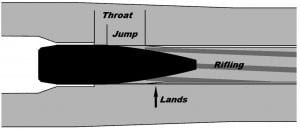wind gypsy
WKR
- Joined
- Dec 30, 2014
- Messages
- 8,322
Nope, not always.
If you have a seating die that is primarily making contact way up the nose of the bullet I could see how you can have to greater CTO variance than COAL variance.
Nope, not always.
Nope, not always.

You are so far from being correct it's frustrating to even reason with you. The bad part is somebody is going to mistake your council for actual knowledge and they'll waste time doing it the absolute wrong way.
Read the below article (I'd love to see you argue with Bryan Litz):

Effects of Cartridge Over All Length (COAL) and Cartridge Base To Ogive (CBTO) - Part 2
The first half of this article focused on the importance of COAL in terms of SAAMI standards, magazine lengths, etc. There is another measure of length for loaded ammunition which is highly important to precision.bergerbullets.com
OP,
Please disregard everything this person has said in regards to COAL. Your groups will thank you.
Nope, not always.
If you have a seating die that is primarily making contact way up the nose of the bullet I could see how you can have to greater CTO variance than COAL variance.
You’re so closed minded that I feel the same way about you.
Bergers have been the worst example of this issue, which is why I said it’s bullet dependent. You can rely on others to tell you something, or you can check it for yourself.
I prefer to verify things, myself. This is how I know that it isn’t always the case.
My opinions are based on actual data and research conducted by professional ballisticians and in my own testing with a multitude of bullets over the course of years of reloading. You are flat out wrong, period.
Are you stating that if you loaded some rounds by COAL and then measured the CBTO that both measurements would be just as precise and show the same variances? I have not found this to be true. The exception may be hand turned/cnc lathe turned bullets like a hammer.
I will agree Berger bullets have some inconsistent meplats but nothing a trimmer can’t fix if you wanted to measure them by COAL. They are some of the most consistent if you measure off the Ogive though.
Also I’ve seen some terrible inconsistent polymer tipped bullets Nosler bullets being the worst.
The only real issue is mag length. If some of my rounds are too long with consistent cbto I’m stuck hand feeding or having to use a much shorter cbto just to ensure fitment In the mag. With that being the case I think I’m better off single feeding and starting load development just off the lands rather than at mag length with the Berger’s.
You can use a Meplat trimmer to uniform the tips of VLD style bullets. You do lose a little BC but nothing major. I personally don’t trim but do drill the tips of Berger’s.The confusion I had came from using cnc machined Hammer bullets when I started learning and loading.
When I tried the Berger’s and things were not going as they did with the hammers I assumed the bullets to be out of spec but since I had not had first hand experience with them I figured there could be an issue with equipment. When really it was method that caused the confusion.
The only real issue is mag length. If some of my rounds are too long with consistent cbto I’m stuck hand feeding or having to use a much shorter cbto just to ensure fitment In the mag. With that being the case I think I’m better off single feeding and starting load development just off the lands rather than at mag length with the Berger’s.
Cahunter what kind of bullet trimmer are you talking about? Didn’t know that was a thing.
When I tried the Berger’s and things were not going as they did with the hammers I assumed the bullets to be out of spec but since I had not had first hand experience with them I figured there could be an issue with equipment.
What round to round variance are you getting with the bto?
I don't measure it unless I have reason to believe something is wrong, like say if the seating die leaves a ring mark on the nose of the bullet. BTO is typically within a thou or two if i recall correctly. I've seen it vary by more with heavily compressed loads.
How would you even determine seating depth if not using cbto? Unless just loading to saami coal. Measuring coal without measuring cbto would be a total shot in the dark at your bullet jump.
What you should do in this scenario is know the max COAL your rifle magazine will accept. Then you should find the COAL of a loaded round with the bullets right at the lands (and, see if it fits in the mag). If loaded round at the lands is shorter than your mag, you're all set. Take the CBTO measurement, seat another .010" or what ever you prefer and start with load development. IMO, no need to ever measure COAL again as long as you know the bullets fit in the magazine.
If your COAL is longer than the mag, and you want to mag feed, seat the bullet just deep enough that it'll fit, then switch to CBTO and base your measurements off that for load development going forward.
Do all these tests with dummy rounds / no primer or powder.
Are you talking about your distance to the lands?